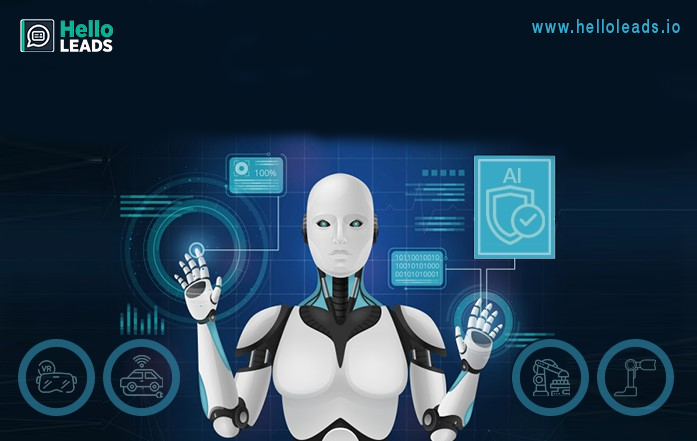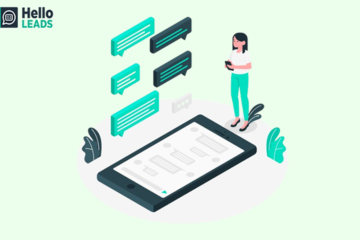
“Artificial intelligence is likely to be either the best or worst thing to happen to humanity.”
-Stephen Hawking
The year 2021 is here. Looking forward to the next decade, in terms of technology. The past decade has seen many interesting and massive developments. Each day is an endless cycle of innovation all around. What can we expect in the next decade?
…..AI is the next decade. AI research and development have seen a huge increase in the past few years. These are likely to continue in the rest of the years ahead.
Artificial intelligence (AI) always outperforms humans in most of the tasks. AI is expected to impact every industry and human being in the near future. AI acts as the main key for evolving technologies like IoT, robotics, augmentation and Big data. There are various forms through which AI is influencing our daily lives. For example, the smart gadgets we use in our everyday life make our day easy. Alexa helps us to remind appointments, check grocery lists, play favorite music, read news etc. AI is growing faster than we expect.
“Everything we love about civilization is a product of intelligence, so amplifying our human intelligence with artificial intelligence has the potential of helping civilization flourish like never before – as long as we manage to keep the technology beneficial.” – Max Tegmark, President of the Future of Life Institute.
Most of the top companies like Google, Facebook, Apple, Amazon are investing a lot of money in research and development of AI. But it is very tough to forecast, how the technology will develop in the future. However, we can predict how AI will progress further and what will be the most common predictions in the upcoming decades.
“[AI] is going to change the world more than anything in the history of mankind. More than electricity.”— AI oracle and venture capitalist Dr. Kai-Fu Lee, 2018
Listed below are top five AI predictions which are going to emerge in the next decade.
#1. Hyper Automation
It is a fact that no single tool can replace humans. But a few tasks performed by humans can be replaced by the performance of machines. This has paved the way for automation which means work is performed by the machine with little or no assistance of human.
The foremost trend in AI to look after is hyper-automation. Hyper-automation means collaboration between humans and machines to instruct the automation tools, which allow the machines to make their own decisions using AI and perform the tasks.
“Hyper-automation deals with the application of advanced technologies, including artificial intelligence (AI) and machine learning (ML), to increasingly automate processes and augment humans. Hyper-automation extends across a range of tools that can be automated, but also refers to the sophistication of the automation (i.e., discover, analyse, design, automate, measure, monitor, reassess.)” – Defined by Gartner
Hyper automation is not a single tool but a combination of multiple tools such as robotic process automation (RPA), intelligent business management software, AI and other advanced tools with AI-driven decision making. For example, companies like Amazon and FedEx are using hyper automation to increase customers experience and execute logistics related work.
Hyper-automation helps many industries to perform manual operations quickly in a short period of time. This reduces the risk of manual error since the machines are calibrated for precision. This also leads to increase the output and productivity.
#2. Autonomous Things
Autonomous things are also known as the Internet of Autonomous Things. Autonomous things are devices that use AI and ML to perform the task partially or fully automatic. The devices may include vehicles, robotics, drone, smart home devices and autonomous software.
To enhance the performance of machines, the machine is incorporated with sensors, AI and ML, which are capable enough to make their own decision and complete the task autonomously. This is also used in various fields like transportation, military, retail, security and weather forecasting.
Autonomous vehicles, for example self-driving cars are receiving more attention and attraction even before we see them on roads. The range of automation may vary, because the vehicle may be partially human assisted or fully automated.
Autonomous drones or Unmanned Aerial Vehicle (UAVs) are ground based controller system, which is commercially used in various field like delivery vehicles, data collector, agriculture etc.
Autonomous things are not only used on the earth but also used in space. For example, NASA’s self-driving rovers are used on Mars. As we know that autonomous things can connect with one another for making decisions and completing tasks. There are several leading companies like Tesla, BMW, Ford are capitalizing a lot in manufacturing fully autonomic vehicles.
#3. Human Augmentation
Human augmentation is also referred as “Human 2.0”. The goal of Human augmentation is to develop a person’s cognitive and physical experiences through technology. It extends with several technical fields & methodological approaches, which are Experimental Psychology, Human-Computer Interaction, Psychophysiology and Artificial Intelligence.
Human augmentation is an interdisciplinary field that addresses methods, technologies and their applications for enhancing sensing, action and/or cognitive abilities of a human. This is achieved through sensing and actuation technologies, fusion and fission of information, and artificial intelligence (AI) methods.
The augmentation can further be divided into four main categories (i) sensory augmentation (hearing, vision, perception) (ii) appendage and biological function augmentation (exoskeletons, prosthetics) (iii) brain augmentation (implants to treat seizures) (iv) genetic augmentation (somatic gene and cell therapy).
Wearables act as an intermediate for human augmentation. For example, in the automotive, mining, retail industries the worker productivity and safety can be improved with the assistance of smart wearable. The growth of human augmentation is not probably accomplishing its level, but the establishment of the technology into the human body will endure to progress in upcoming years.
#4. Multi Experience
Our interactions with technology are advanced far beyond a single interaction with a computer. Every industry is facing a challenge to create a reliable user experience through smartphones and smart wearable devices. So, multi experience technology will be the heart of the digital transformation in the future.
Multi-experience technology is one of the most trending technologies that revolutionizes the experience of the user in everyday life. The technologies like Virtual Reality (VR), Augmented Reality (AR) and Mixed Reality (MR) which are providing a different dimension, the way we perceive our real world and the digital world.
According to Gartner, “by 2023, more than 25% of the mobile apps, progressive web apps, and conversational apps at large enterprises will be built and/or run through a multi-experience development platform.”
Every industry is trying to provide the wow factor to mobile customers by creating an exceptional user experience. So, the combination of consumer attraction towards smart devices, the rise of IoT and AI will also create more opportunities and new challenges in equal amounts.
#5. AI Security & Ethics
We are aware that our personal information is the most valuable and requires protection in the digital world. The usage of the internet has increased enormously in recent years. Our data is being collected and stored by many digital organizations. Therefore, the need for digital security, ethics and data protection will be an important part in upcoming decades.
In addition to that, AI and ML are mainly used to make their own decisions in the place of human beings. So, this increases the need for ideas like sensible AI and AI governance.
“As AI and ML become increasingly automated, it’s paramount organizations invest the necessary time and resources to get security and ethics right. To do this, enterprises need the right talent and the best data. Closing the skills gap and taking another look at data quality should be their top priorities in the coming year.”
AI has been used in many areas such as consumer, healthcare, transport, professional services and defence industries. It promises to convey knowledge and developing system that are more efficient, safer, smarter and able to function at scale.
There are several countries adapting the space of AI with fundamental principles. It is important that the sectors like government, business, academia and society should collaborate and build on prevailing position so that everyone can engage AI further to discriminate and boost the growth of technology soon.
Share this blog :











Leave a Reply